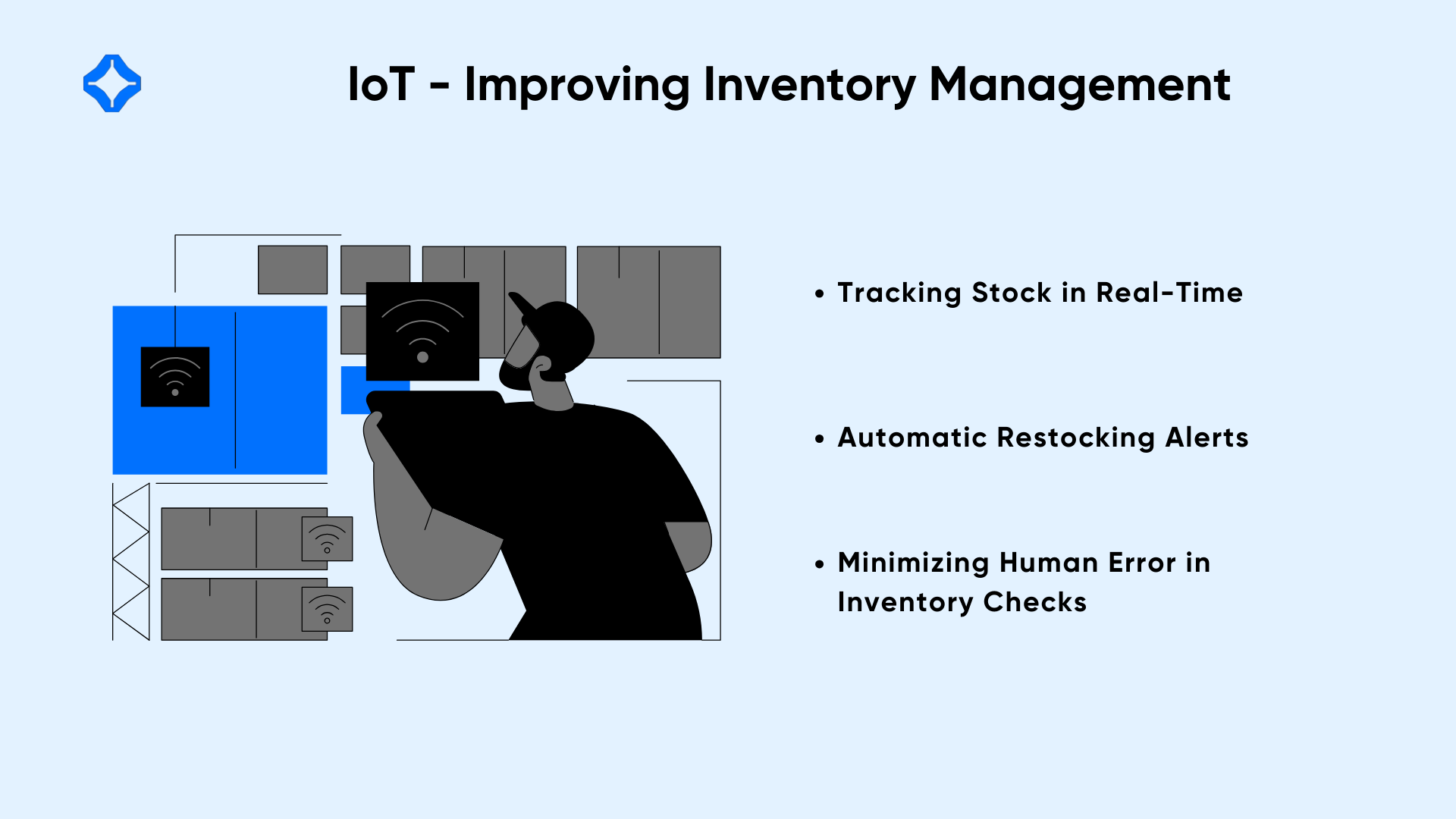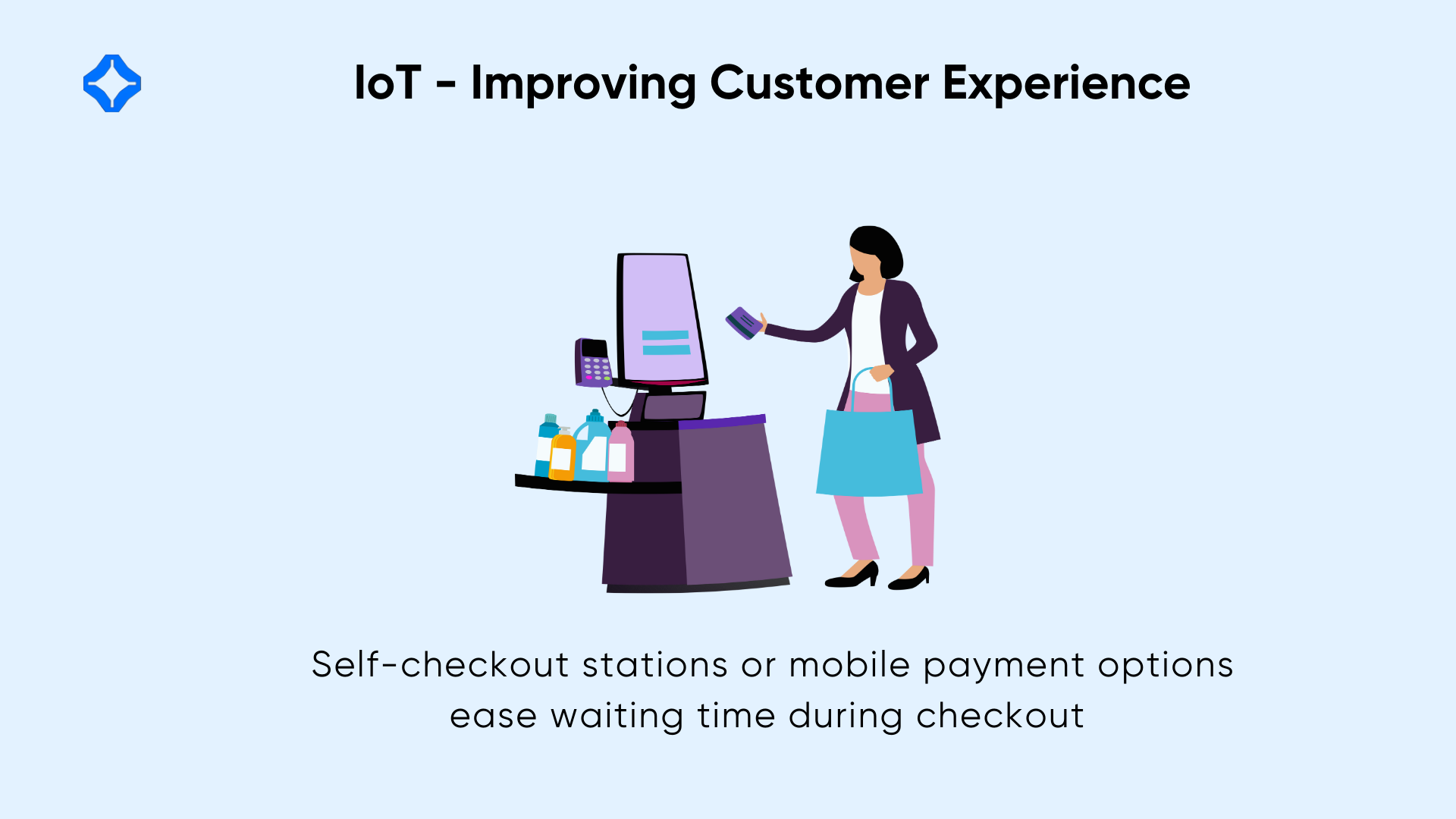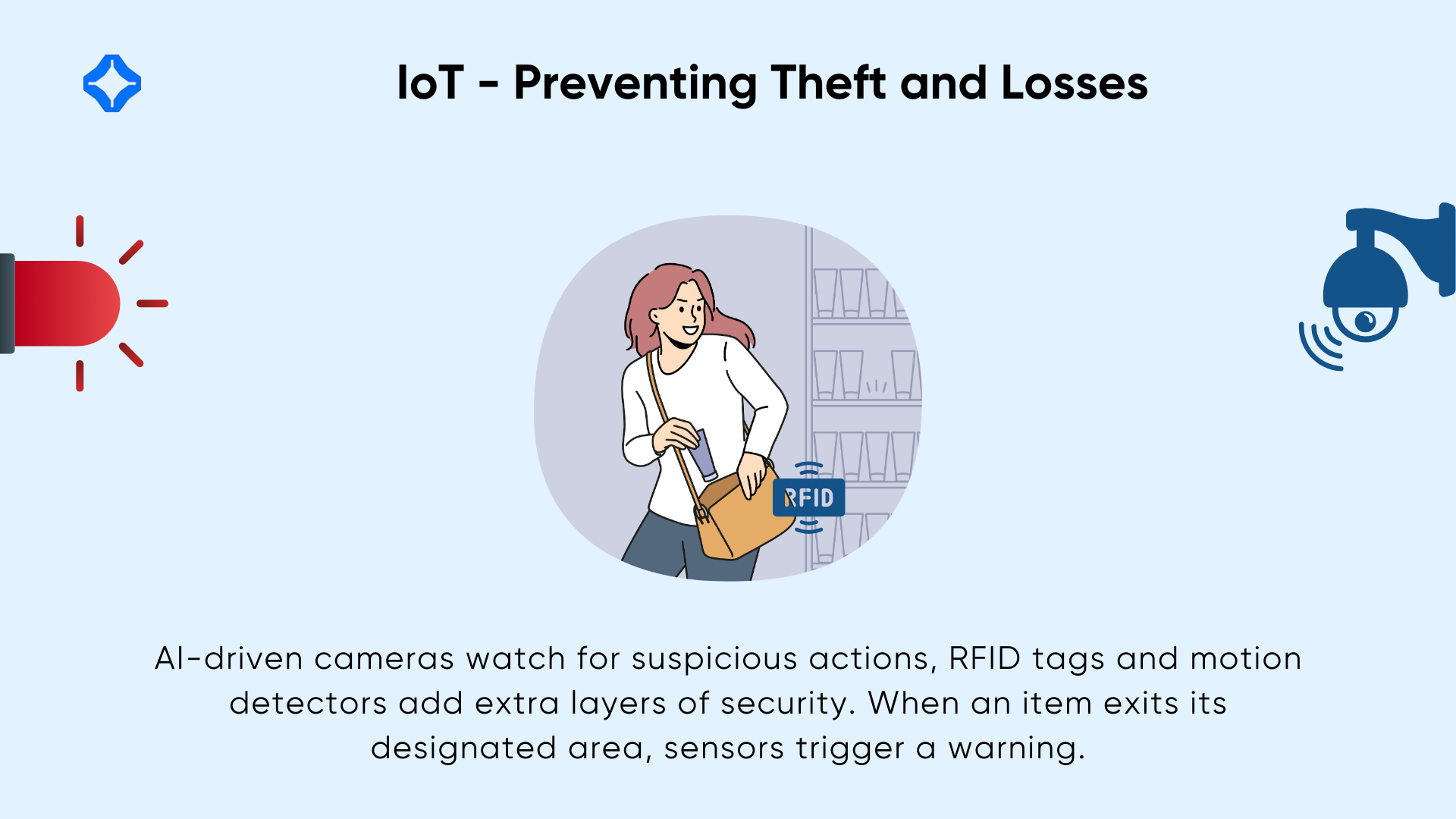Retailers work in a fast-paced market with shifting customer demands. They manage products, track inventory, and strive to keep shoppers happy. IoT-Enabled SaaS solutions help stores address these tasks with speed and accuracy. Connected devices gather real-time data, while cloud-based platforms turn that data into practical insights.
This article explores how IoT and SaaS intersect to improve retail operations. Each section highlights ways these tools streamline tasks, from managing stock to boosting security. By adopting connected technology, retail brands can adapt to new trends and deliver better service to their customers.
Why Retailers Are Using IoT-Enabled SaaS
Shops must handle a large volume of products while keeping costs under control. IoT sensors spot potential shortages or track product movements with minimal manual effort. SaaS tools interpret those readings, suggesting the next actions.
By automating tasks, retailers spend less time on repetitive work. They also gain a deeper awareness of sales patterns and customer habits. This knowledge informs better strategies, leading to higher profits and smoother store operations.
Improving Inventory Management

Tracking Stock in Real-Time
Traditional stock checks require staff to scan shelves by hand. This process is slow and prone to errors. With IoT devices, each item or shelf has a sensor that updates the system automatically.
As a product’s quantity drops, the cloud platform logs the change. Store managers can see these numbers on a dashboard instead of walking the aisles. This real-time insight reduces overstocking and limits out-of-stock incidents.
Automatic Restocking Alerts
Running out of popular items can push loyal shoppers to rival stores. IoT and AI automation together predict when an item might sell out. The system reviews previous trends, current demand, and shipment times.
The SaaS tool then places new orders or sends notifications before supplies run low. This planning maintains a steady product flow so customers find what they need on each visit. Retailers avoid empty shelves that might damage their reputation.
Minimizing Human Error in Inventory Checks
Manual checks can miss details or overlook hidden stock. Sensors offer consistent monitoring, catching issues staff might skip. The system compares digital and physical counts, highlighting discrepancies.
By automating these checks, stores waste fewer hours on manual tasks. Employees can focus on helping shoppers or reorganizing shelves. This careful balance lifts productivity and morale across teams.
Optimizing Supply Chain Operations
Tracking Products from Warehouse to Store
Smooth deliveries keep retail operations running. GPS and other trackers follow shipments in real time. If a truck faces delays or changes course, the software flags the problem.
Store managers can adjust schedules or offer updates to customers awaiting items. Efficient routing also trims transportation costs, boosting a chain’s bottom line. When staff know where shipments are, they avoid guesswork and plan better.
Preventing Equipment Failures
Many retail operations rely on critical hardware, such as freezers or conveyor belts. An unexpected breakdown can spoil goods or slow delivery. IoT sensors check performance metrics to detect faults.
SaaS alerts managers when readings stray from normal levels. By addressing issues early, stores save money on emergency repairs. This preventive care lowers disruptions and protects inventory.
Coordinating Multiple Warehouses
A chain might operate several warehouses across different regions. IoT sensors share stock updates from each location. The SaaS platform unifies these feeds, creating a single source of truth.
Managers see which site holds certain items and move them as needed. This centralized system reduces duplication and speeds up order fulfillment. The result is a unified supply network that can adapt to changing demand.
Improving Customer Experience

Personalized Shopping Suggestions
Customers enjoy customized recommendations that reflect their interests. AI models analyze buying history to predict items a shopper might like. IoT devices can even track in-store movements, noting which aisles customers visit.
The SaaS platform compiles these data points and highlights suitable products. AI chatbots can handle product questions and recommend items, enriching the in-store journey. With personalized deals, customers feel that the retailer understands their tastes. This approach increases repeat visits and overall loyalty.
Faster Checkout with Smart Devices
Long waiting lines drive shoppers away. Self-checkout stations or mobile payment options ease waiting time during checkout. These systems link to the store’s back-end inventory records, updating stock counts with each purchase.
Customers finish shopping faster, therefore increasing their satisfaction. Staff can then assist with complex questions or restocking tasks. Shorter waits encourage more encouraging buys and help the store serve more loyal customers each hour.
In-Store Engagement Tools
Digital signboards and interactive screens can guide shoppers to promotions. IoT sensors track foot traffic, so the SaaS platform knows busy zones. Retailers can place signs in areas with maximum visibility.
When customers pause at a display, the system notes how long they stay. Managers then tweak layouts or content to spark more interest. These small adjustments keep stores fresh, inviting, and relevant.
Reducing Energy Use and Costs
Smart Power Management
Retail spaces demand lighting, cooling, and heating throughout the day. Sensors monitor usage levels, adjusting systems as needed. For example, if foot traffic dips, lights can dim to save power.
This automated approach keeps shoppers comfortable without wasting resources. Detailed energy reports help management set budgets or find ways to cut costs. Over time, these steps reduce the store’s environmental impact.
Reducing Waste in Retail
Food retailers face a risk of spoilage if items stay past their sell-by date. Smart sensors track conditions in cold storage, measuring temperature and humidity. When items approach expiration, alerts prompt quick actions.
Staff can discount soon-to-expire goods or move them to high-traffic sections. This strategy lowers waste while retaining product freshness. Customers appreciate the improved quality and clear labeling on shelves.
Financial Benefits of Sustainable Practices
Conserving energy and reducing spoilage have direct financial gains. Fewer wasted products mean reduced losses and, lower utility bills, and free capital for other projects. Shoppers often support stores that show green awareness.
This positive brand image can draw eco-conscious buyers. By highlighting energy-saving efforts, retailers differentiate themselves from competitors. The result is both cost savings and stronger community appeal.
Preventing Theft and Losses

Better Security with Smart Cameras
Surveillance is a vital part of protecting retail assets. AI-driven cameras watch for suspicious actions, like spending more time near high-value goods. If the system spots unusual movements, it notifies store security immediately.
Live feeds and recorded footage help pinpoint dishonest behavior. Quick responses deter theft and reassure honest customers that the store is safe. These tools also reduce false alarms, focusing on real risks.
Smart Sensors for Theft Prevention
RFID tags and motion detectors add extra layers of security. When an item exits its designated area, sensors trigger a warning. Store staff can respond faster, often preventing loss before it occurs.
This seamless setup allows open store layouts without constant human supervision. Honest shoppers also benefit from a calmer atmosphere. They explore displays freely without feeling watched by staff at every turn.
Protecting High-Value Merchandise
Electronics or luxury items attract thieves looking for quick gains. Sensors track these items closely, logging their location in real time. If someone tampers with packaging, the system recognizes tampering signals.
Managers receive instant updates, allowing a swift reaction. This approach keeps goods secure and reduces insurance premiums. By combining sensor tech with strong policies, losses fall, and employee accountability rises.
Challenges in Using IoT and SaaS in Retail
Keeping Customer Data Safe
Retailers gather large amounts of personal details, from payment methods to shopping habits. Hackers might see these databases as primary targets. Providers must uphold SaaS cloud security standards through encryption and frequent patches to guard customer information.
Retailers should also educate staff on data handling, ensuring no one shares sensitive data improperly. Clear privacy policies help shoppers trust the brand with their information. Secure practices protect both the company and its customers.
Making IoT and SaaS Work with Existing Systems
Some shops still run on older software for tasks like accounting or employee scheduling. Integrating new IoT devices can be tricky if the legacy system lacks modern interfaces. Thorough planning and testing help avoid technical mishaps.
Retailers might invest in middleware solutions to bridge outdated platforms with the new ecosystem. Phased rollouts and pilot projects ensure a smooth shift. This approach decreases downtime and ensures employees adapt well.
Handling Network Reliability
IoT devices rely on steady internet connections. If the network goes down, sensors stop sending updates, and SaaS dashboards may freeze. To lessen this risk, retailers often install backup connections or offline modes.
Planning for disruptions keeps data flowing, even in unexpected circumstances. Regular system checks help spot weak spots in coverage or bandwidth. Stable connectivity underpins all other IoT and SaaS benefits.
Future Trends in IoT and SaaS for Retail
Using AI for Smarter Retail Decisions
AI keeps advancing, offering deeper insights into shopper preferences. It analyzes what sells quickly, which times are busiest, and how certain promotions perform. By learning from these patterns, stores can optimize their product mix.
As automation grows, employees can focus on relationship-building and strategic planning. Meanwhile, the software refines its models with every purchase, email sign-up, or return request.
Creating Seamless Shopping Experiences
Modern consumers move between online and in-person channels. IoT helps unify these spaces, linking stock data and customer profiles across platforms. A shopper who orders online might pick items up in-store with no confusion about availability.
Augmented reality and location-based alerts may soon guide customers through store aisles. This immersive experience blends convenience with excitement, encouraging higher spending and increased brand loyalty.
Merging Physical and Digital Retail
Some experts predict a complete merger of physical storefronts and online sites. IoT sensors measure foot traffic, while SaaS tools track web clicks. Retailers analyze both, refining store layouts based on user interest.
A certain product might get more online views than sales. Managers can spotlight it in the store or adjust pricing. This data-driven approach shifts the entire retail model, and increase profits.
Conclusion
Retailers that utilize IoT gain real-time insights into their stock and operations. SaaS platforms convert those sensor feeds into actionable updates. As a result, store teams avoid guesswork and reduce errors that harm customer trust.
Automation eases workloads so staff can focus on tasks where human skills matter most. More efficient operations keep shelves stocked and shoppers happy. This synergy of devices and cloud tools paves the way for ongoing success in a changing market.
FAQs
IoT-enabled SaaS combines smart devices (IoT) with cloud-based software (SaaS) to help retailers manage inventory, track sales, and improve customer experience. It allows real-time monitoring and automation of retail operations.
IoT sensors track shipments, storage conditions, and delivery times. SaaS platforms analyze this data to help businesses prevent delays, optimize routes, and reduce shipping costs.
Yes. IoT-enabled security cameras and motion sensors detect unusual behavior and send alerts in real time. Smart tags and RFID systems prevent shoplifting by tracking high-value items.